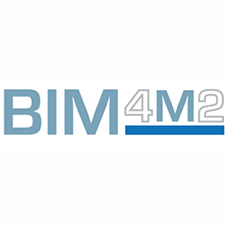The UK government has mandated that all centrally-funded work is to be undertaken using BIM by 2016. The deadline is now less than a year away, and those organisations that haven’t yet jumped on the bandwagon are feeling the pressure. In this week’s blog we will look into how achievable BIM Level 2 by 2016 is.
Recent research conducted by UK Construction Week in partnership with BRE, which questioned more than 1,200 architects, contractors, developers, engineers and product manufacturers about their experiences of BIM, revealed a number of uncertainties throughout the industry. The study suggested that three quarters of construction professionals do not believe the industry is ready to meet mandatory BIM Level 2 requirements by 2016, and that a further 62 per cent of respondents replied that they do not understand what is needed in order to meet the requirements of BIM Level 2. The results also uncovered a tension between the expectations of the specification community and the perceived demand for BIM-compliant products by manufacturers and suppliers.
Another study, conducted by CONJECT, highlights the significant leaps forward needed to attain BIM Level 2 compliance by 2016. The survey sample consisted of 813 respondents with 70% from the CONJECT database and 30% from third party sources. Whilst 85% were from the supply chain, the asset owner functions were also represented in the research.
The need for training was consistently highlighted throughout the results of the survey, and from those who answered, some felt that BIM was something imposed on them, holding limited benefits but costing time and money. The research suggests there is still a considerable way to go before the industry can say it is BIM ready. Although main contractors and to a some degree subcontractors and consultants appear enthusiastic to improve their BIM capabilities, there is still a view that BIM is optional, or that it only applies to those who work in the public sector or on larger jobs.
However, overall acceptance and adoption of BIM does appear to be on the increase, with 85 per cent of respondents for the UK Construction Week study claim that its introduction is a positive development for the industry. Only 16 per cent of the sample have never used BIM and have no plans to do so, while the remainder are already active or are preparing to embark on BIM projects in the near future.
BIM4M2 also hold a more optimistic view, and believe now is the optimum time for product manufacturers to start their BIM journey (if they haven’t already) as the optional tools to support manufacturers’ BIM adoption will be launched at their event on 28th July. They also state there is increasing clarity on what is required from product manufacturers, making it easier to provide the right information at the right time, to the right people.
It seems that there is still a long way for the requirements of the 2016 BIM mandate to be met, even though the industry is moving towards this goal. There is a lot of help available for those struggling to implement the required level, however it also seems that education on the requirement and its optionality is required. The important thing to remember is that no-one is alone.
What do you think? Will the UK industry meet the requirements of the 2016 BIM mandate?
• Our blog on BIM for the future generations offers an insight into how young professionals are approaching BIM.
• How SMEs can benefit from BIM Is an interesting insight into what SMEs need to do to embrace BIM
Related Blog Articles



